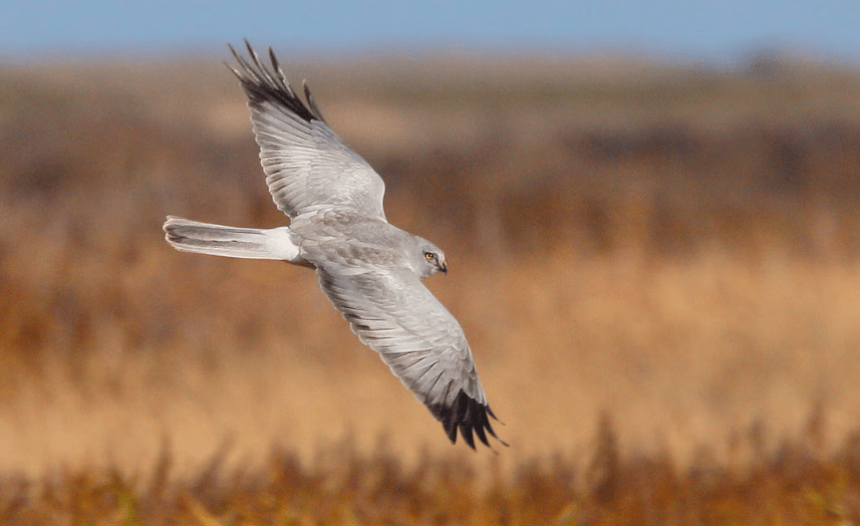A disturbing surge in the number of illegally killed or mysteriously vanished hen harriers has been reported over the past five years, according to a new warning from the RSPB.
The hen harrier, a rare and legally protected bird of prey, is renowned for its striking “skydancing” courtship ritual across Britain’s uplands, including areas like the Forest of Bowland in Lancashire and the Yorkshire Dales.
Between 2020 and 2024, a staggering 102 hen harriers were either confirmed dead or reported missing in suspicious circumstances. The majority of these incidents occurred in locations where grouse shooting is prevalent, the RSPB has revealed.
Alarming Acts of Brutality
The charity detailed a chilling range of persecution tactics: birds being shot, chicks trampled, and others poisoned or caught in illegal traps.
Scotland already requires licences for grouse moors, a system conservationists want extended to England. Pressure on the UK government has been mounting for tighter controls.
While in opposition, the Labour Party hinted it would be open to considering grouse shoot licensing in England. Now, with MPs set to debate a petition from campaign group Wild Justice, which has gathered over 100,000 signatures calling for a ban on driven grouse shooting, the issue is gaining momentum.
However, the government appears reluctant to introduce sweeping changes. In its response, it stated: “Well-managed grouse shooting can be an important part of a local rural economy, providing direct and indirect employment.”
Link Between Grouse Moors and Deaths
The RSPB’s latest report, titled Hen Harriers in the Firing Line, draws a strong connection between bird deaths and grouse shooting estates. A recent study noted that hen harriers survive just 121 days on average after leaving their nests.
Shockingly, 75% of deaths in birds aged between one and two years are attributed to persecution.
Listed as a red-alert species, hen harriers are among the UK’s most targeted birds of prey. With numbers teetering towards local extinction, illegal killings are a major obstacle to their recovery, as confirmed by multiple studies.
Despite the scale of the issue, no one in England has ever been convicted of killing a hen harrier. Campaigners argue that the remoteness of the incidents and the difficulty of securing solid evidence mean perpetrators often go unpunished.
James Robinson from the RSPB stressed: “This species will not recover until the criminal activity stops, and for this to happen we need regulation of the grouse shooting industry – specifically the introduction of a licensing system for shoots in England, so estates proven by the police and Natural England to be linked to raptor persecution would lose their licence to operate.”
However, the findings have been met with scepticism by some within the shooting community. Andrew Gilruth, chief executive of the Moorland Association, challenged the RSPB’s conclusions, saying the data lacked independent verification and that such claims unfairly damage the reputation of gamekeepers.
The British Association for Shooting and Conservation also raised concerns, stating: “Proposals for a licensing system based on a civil burden of proof risk punishing the law-abiding without due process. Instead, we support constructive, evidence-led solutions such as Natural England’s Hen Harrier Action Plan.”
A spokesperson for the Department for Environment, Food and Rural Affairs (Defra) added: “Hen harriers are a rare and precious feature of our national landscapes.
“It’s why through our work with the National Wildlife Crime Unit, the Hen Harrier Taskforce is using innovative technology such as drones and specialised detection dogs to help tackle illegal persecution.”
The debate continues, but one thing is clear: the hen harrier, once a common sight across the uplands, is facing a crisis that demands urgent and decisive action.






